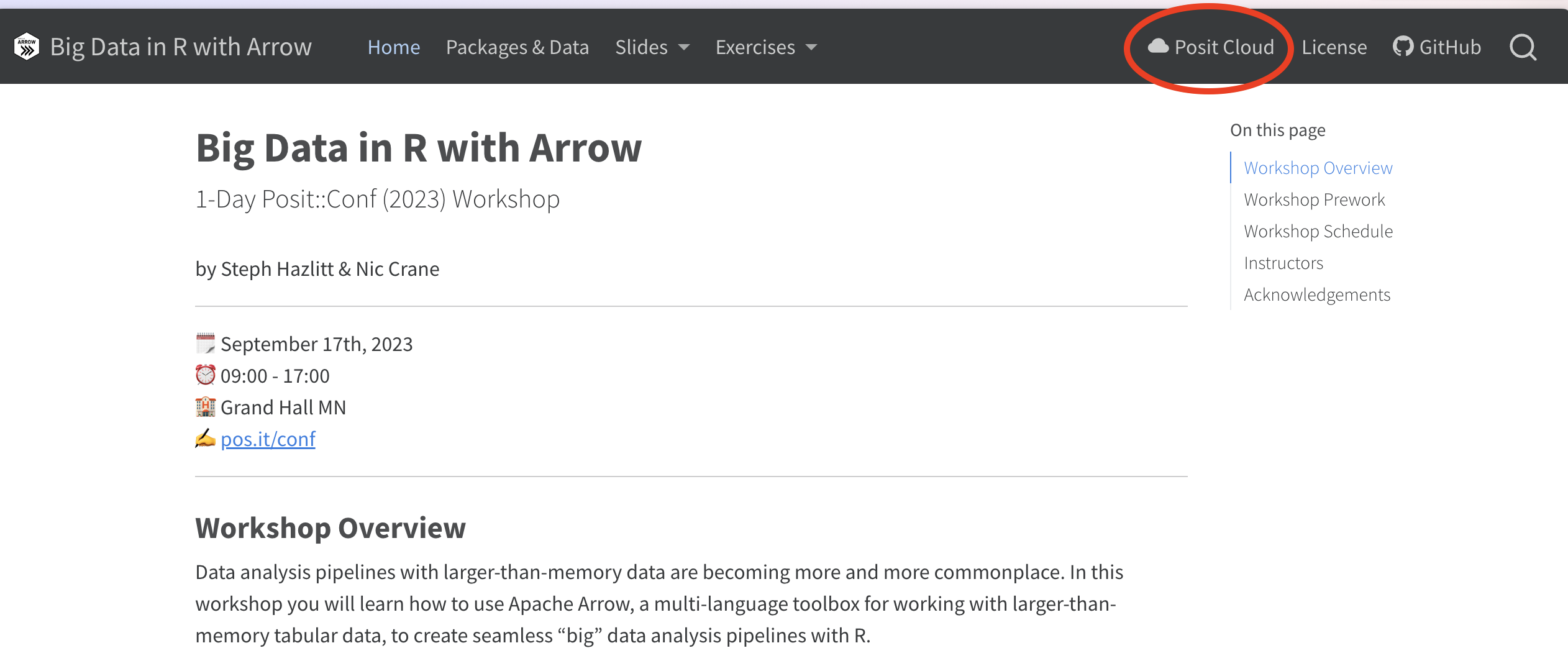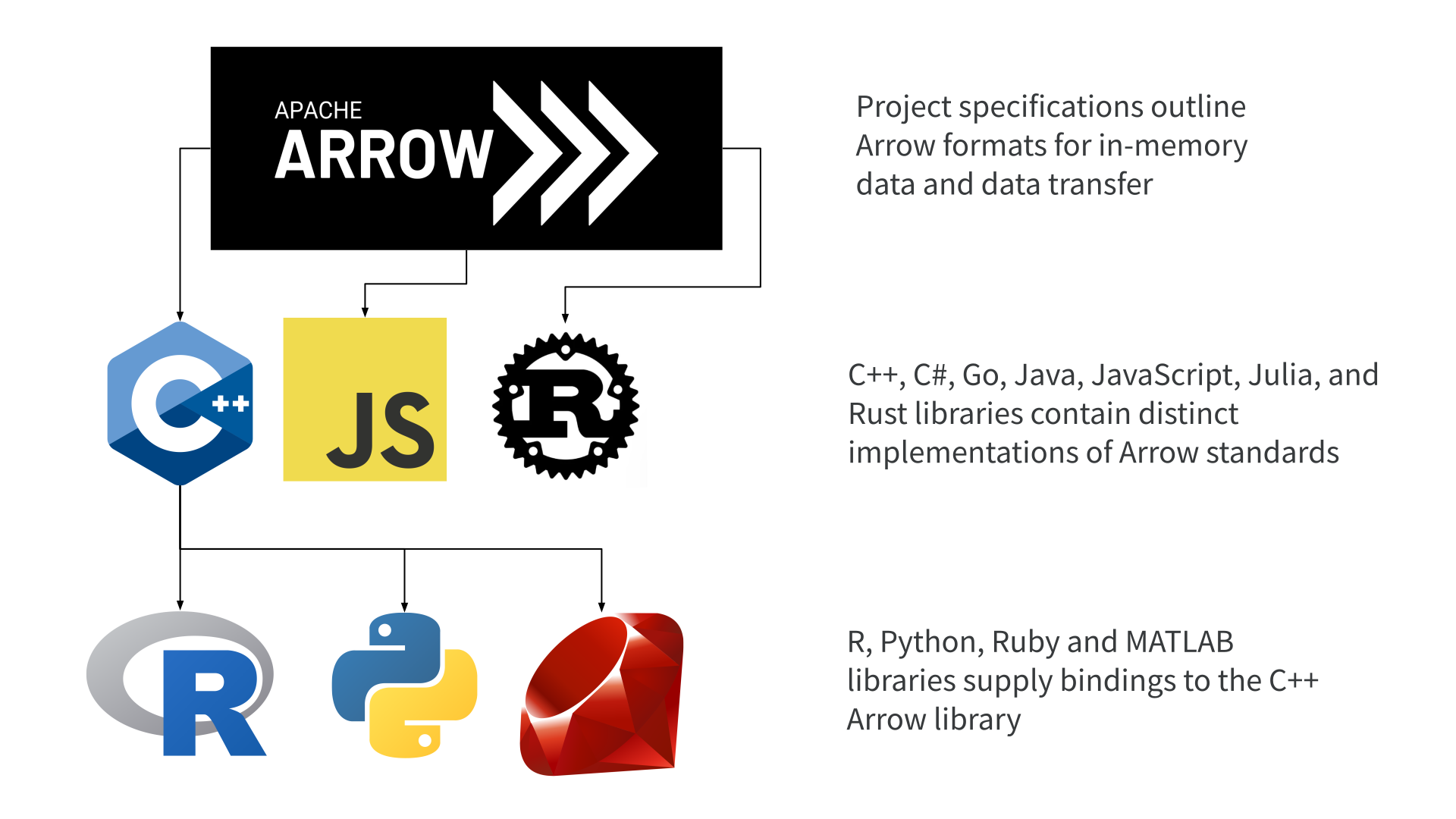Hello Arrow
Poll: Arrow
Have you used or experimented with Arrow before today?
Vote using emojis at on the discord channel!
1️⃣ Not yet
2️⃣ Not yet, but I have read about it!
3️⃣ A little
4️⃣ A lot
Hello Arrow
Demo

Some “Big” Data

NYC Taxi Data
- big NYC Taxi data set (~40GBs on disk)
- tiny NYC Taxi data set (<1GB on disk)
Posit Cloud ☁️
- Join the cloud workspace via URL in the workshop Discord channel
- You will need to create a (free) Posit Cloud account

Posit Cloud ☁️
- Once you have joined you can come and go

Larger-Than-Memory Data
arrow::open_dataset()
NYC Taxi Dataset
NYC Taxi Dataset
1.15 billion rows 🤯
NYC Taxi Dataset: A question
What percentage of taxi rides each year had more than 1 passenger?
NYC Taxi Dataset: A dplyr pipeline
library(dplyr)
nyc_taxi |>
group_by(year) |>
summarise(
all_trips = n(),
shared_trips = sum(passenger_count > 1, na.rm = TRUE)
) |>
mutate(pct_shared = shared_trips / all_trips * 100) |>
collect()# A tibble: 10 × 4
year all_trips shared_trips pct_shared
<int> <int> <int> <dbl>
1 2012 178544324 53313752 29.9
2 2013 173179759 51215013 29.6
3 2014 165114361 48816505 29.6
4 2015 146112989 43081091 29.5
5 2016 131165043 38163870 29.1
6 2017 113495512 32296166 28.5
7 2018 102797401 28796633 28.0
8 2020 24647055 5837960 23.7
9 2021 30902618 7221844 23.4
10 2019 84393604 23515989 27.9NYC Taxi Dataset: A dplyr pipeline
6.077 sec elapsed
Your Turn
Calculate the longest trip distance for every month in 2019
How long did this query take to run?
What is Apache Arrow?
A multi-language toolbox for accelerated data interchange and in-memory processing
Arrow is designed to both improve the performance of analytical algorithms and the efficiency of moving data from one system or programming language to another
Apache Arrow Specification
In-memory columnar format: a standardized, language-agnostic specification for representing structured, table-like data sets in-memory.

A Multi-Language Toolbox

Accelerated Data Interchange

Accelerated In-Memory Processing
Arrow’s Columnar Format is Fast

arrow 📦

arrow 📦

Today
- Module 1: Larger-than-memory data manipulation with Arrow—Part I
- Module 2: Data engineering with Arrow
- Module 3: Larger-than-memory data manipulation with Arrow—Part II
- Module 4: In-memory workflows in R with Arrow
